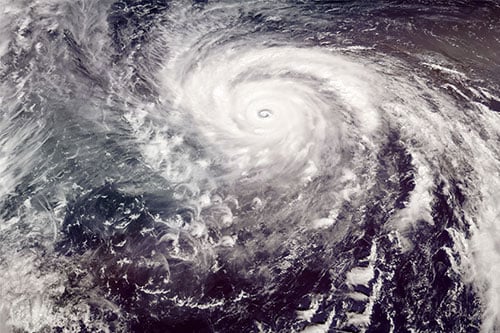

Mother Nature is an uncontrollable beast. We cannot use technology to dial a hurricane down from a Category 5 (sustained winds of over 156mph) to a Category 1 (wind speeds between 74 to 95mph), or to reduce a tornado from an EF 5 (wind speeds of up to 200mph or more) to an EF 1 (wind speeds of up to 110mph). But we can use technology to improve how we manage catastrophic weather risks.
Today, insurers have access to advanced data modelling and analytics, which can provide critical insights into how to prepare and plan for weather events that may occur, as well as how to respond to those events and deploy resources effectively. This is especially important after a catastrophic weather event because it helps insurers manage their costs by accelerating the claims timeline.
One data forensics tool that’s particularly useful for insurers in the immediate aftermath, or even during, a weather event is property-specific weather event verification. This is one of the specialties of CoreLogic, a global property data and analytics services provider, which provides weather peril verification and natural hazard risk reports to help insurers and risk managers proactively manage risk and loss associated with extreme weather, natural hazard and catastrophe events.
“Quality forensic data, or event verification data, can really help [insurers] understand what the exposure is to their book of business,” said Curtis McDonald, senior product manager, weather verification services, CoreLogic. “Wind verification […] tornado verification and flood verification technologies can be utilized to understand very quickly once a storm makes landfall, or even as a storm is still making landfall, [which properties] are being impacted most significantly.”
According to CoreLogic analysis, hail and wind claims are among the most significant categories of property damage expense. Credibly verifying damages caused by wind and hail at the property level has traditionally been a challenge for insurers. Event verification used to be based on public safety algorithms or single-point data observations collected by nearby airport locations, but today’s unique weather science and data techniques – those used in CoreLogic’s solutions - provide insurance carriers with a more scientific approach to understanding individual property damage from storms.
“This is where using different tools and analytics is really important. Insurers can upload a book of business or a portfolio and understand very quickly, using the forensic data, who was most significantly impacted,” McDonald added. “That can have a huge benefit, specifically in the claims space for insurers, [in terms of] how they handle those claims. Insurers quickly get an understanding of: Do I have 100 claims, or do I have 1,000 claims? They can use these technologies to map exactly who is impacted, as well as the magnitude [in order to determine] the level of damage expected at each location.”
Armed with that weather event verification data, insurers and claims adjusters can then apply what they know about local building codes and other characteristics of the impacted region to really get a good understanding of how many claims they can expect following an event. According to McDonald, this helps insurers to manage their response to weather events and determine whether they need to send in additional resources or whether they can start adjusting claims off-site using verification technologies.
